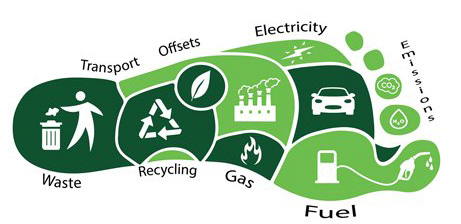Click here to view in a new window.
2022 Sun Sept 18
M.O.R.E Book, Part 2 – Measure. How and Why it matters ?

Join us Sept 19, 7pm on Zoom to discuss and learn about how much of a carbon consumer we are. This is the second of four parts discussing the M.O.R.E Book. Last week was an introduction to climate change
Basically, a carbon footprint is a way of calculating the Green House Gases created on behalf of a person, place or thing. The Green House gases are carbon dioxide, methane and nitrous oxide. These gases are responsible for warming the environment Your ecological footprint includes not only your carbon footprint, but other factors too, like how quickly you consume natural resources like plant crops, animal foods and water.
You can calculate a carbon food print for virtually anything: an individual, company, industry or country The bigger the footprint, the bigger the contribution to global warming and climate change.
What is carbon neutral ? You’re carbon neutral if the amount of CO₂ emissions you put into the atmosphere is the same as the amount of CO₂ emissions you remove from the atmosphere
Why carbon neutrality important ?
-Less environmental pollution and improvements to health.
-A boost to sustainable economic growth and the creation of green jobs.
-Enhanced food security by lessening the impact of climate change.
– A halt to the loss of biodiversity and an improvement in the condition of the oceans.
We will be calculating a carbon footprint using an online program- Cool Climate
https://coolclimate.berkeley.edu/calculators/household/ui.php
We will construct an action plan to reduce your footprint
“Wild Geese” – Mary Oliver

This week on Sept 22 we reach the autumn equinox. What better way to celebrate this transition than with a poem by Mary Oliver!
Canada Geese migrate south in winter and north in summer. We may assume the poem may set in the fall when they are flying south for food, but Oliver never tells us where is home.
Home may not just be a destination but our efforts to connect to one another. We may fly alone but like geese we may be call out to others so we may connect in the “family of things.” We have much in common – “Tell me about despair, yours, and I will tell you mine…” Communication can be a part of the healing which creates bonds to one another.
However, we shouldn’t dwell in despair since Oliver sees the world going on. Yes it can be “harsh” but “exciting “, open to our “imagination. We just have to be a part of it, traveling like the seasons. Oliver’s imagery is rich – rain going across America and the geese flying.
Oliver’s imagery is rich as the world she describes. She has won many awards for her writings among these, the Pulitzer prize and the National Book award. She makes her home in Provincetown, Massachusetts.
